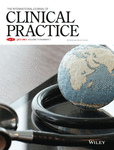Development and application of a new framework for infectious disease management at the early stage of new epidemics: Taking COVID-19 outbreak in China as an example
Ziyi Li and Cheng Li contributed equally to this work.
Funding information
This work was supported by the Science Foundation of Guangdong Second Provincial General Hospital (Grant recipient: Dr Guowei Li; Grant no. :YY2018-002) and Doctoral Workstation Foundation of Guangdong Second Provincial General Hospital (Grant recipient: Dr Ziyi Li; Grant no. :2019BSGZ027)
Abstract
Background
The outbreak of coronavirus disease 2019 (COVID-19) rapidly spread across worldwide, posing a significant challenge to public health. Several shortcomings in the existing infectious disease management system were exposed during the pandemic, which hindered the control of the disease globally. To cope with this issue, we propose a window-period framework to reveal the general rule of the progression of management of infectious diseases and to help with decision making at the early stage of epidemics with a focus on healthcare provisions.
Methods
The framework has two significant periods (dark-window period and bright-window period). Outbreak of COVID-19 in China was used as an example for the application of the framework.
Results
The framework could reflect the progression of the epidemic objectively. The spread increased slowly in the dark-window period, but rocketed up in the bright-window period. The beginning of the bright-window period was the time when healthcare personnel were exposed to a substantially high risk of nosocomial infection. Additionally, proper and prompt preventive actions during the dark-window and bright-window periods were substantially important to reduce the future spreading of the disease.
Conclusions
It was recommended that when possible healthcare provisions should upgrade to the highest level of alert for the control of an unknown epidemic in the dark-window period, while countermeasures in the bright-window period could be accordingly adjusted with full exploration and considerations. The framework may provide some insights into how to accelerate the control of future epidemics promptly and effectively.
DISCLOSURES
None.
Open Research
DATA AVAILABILITY STATEMENT
The data that support the findings of this study are available from the corresponding author upon reasonable request.




